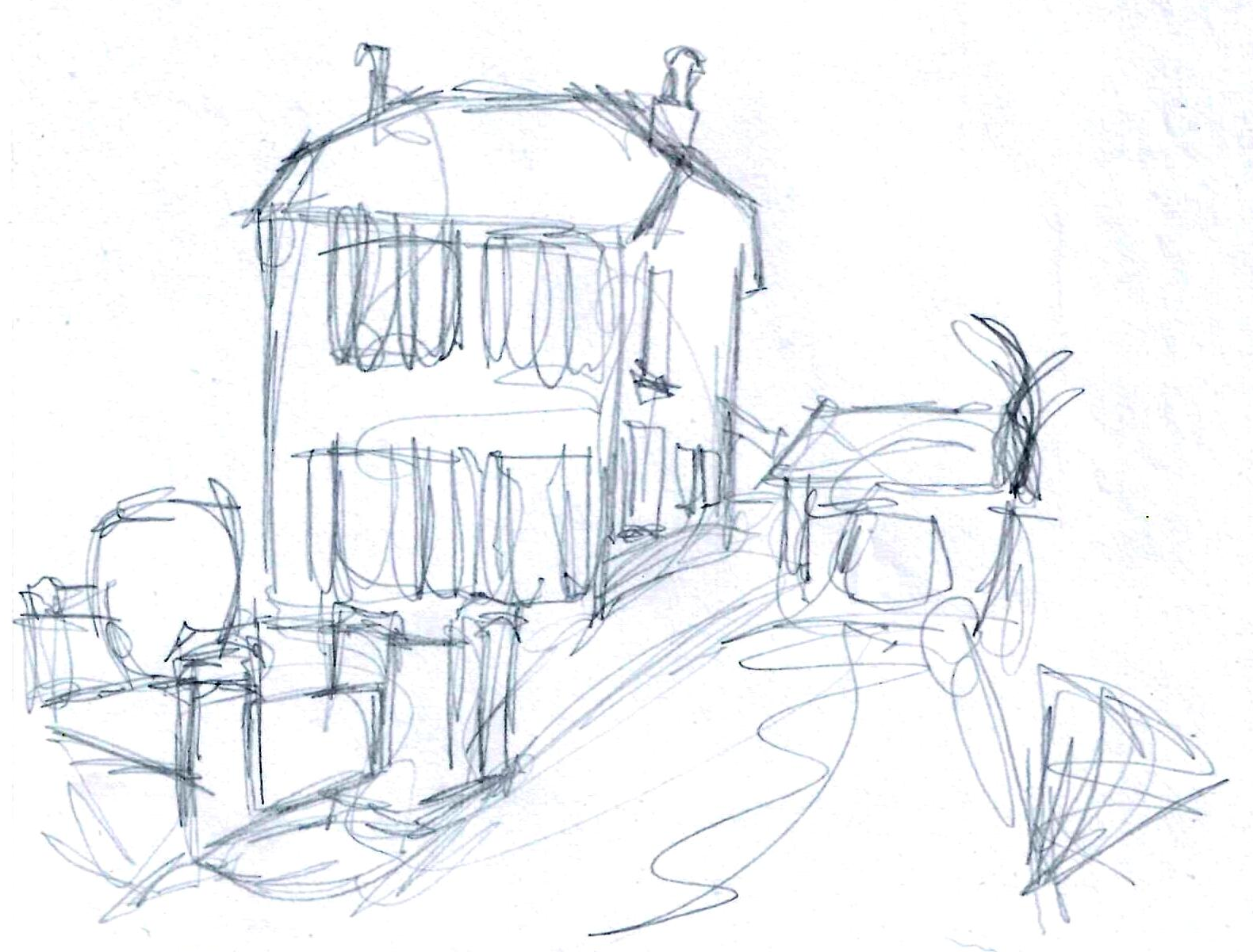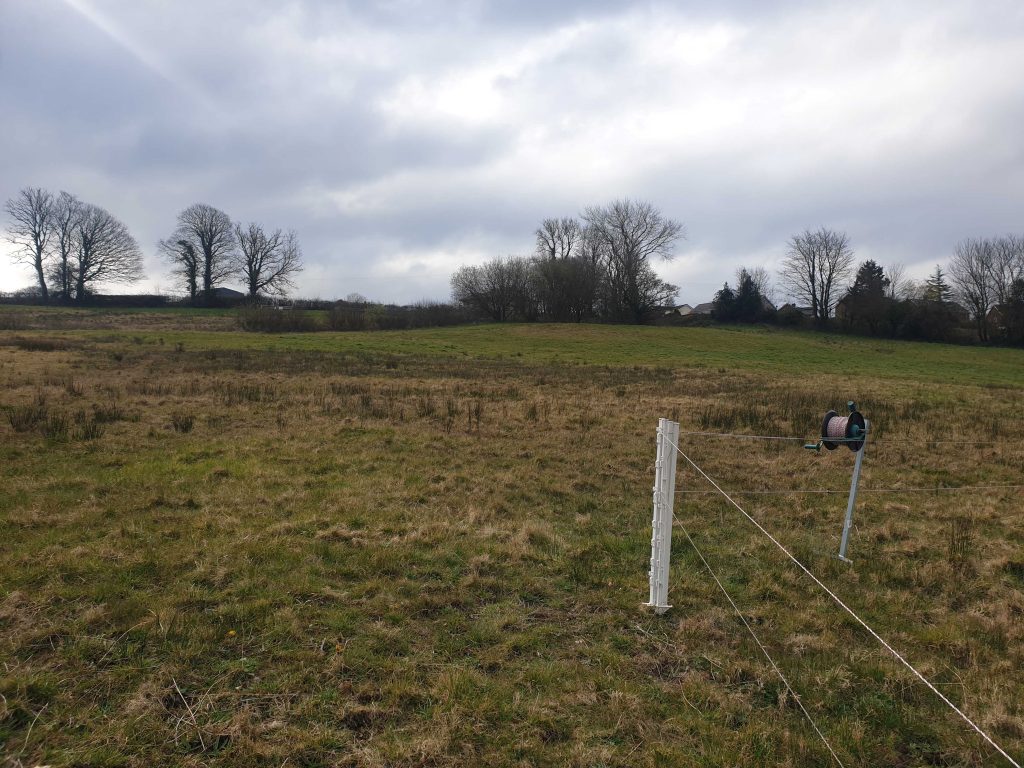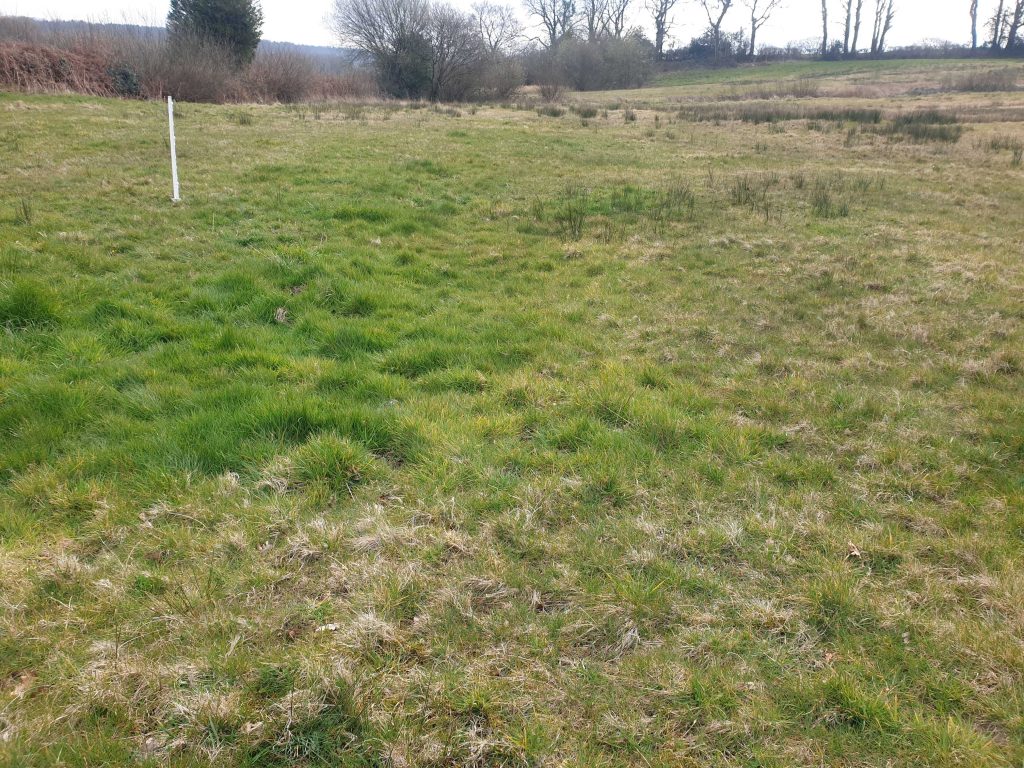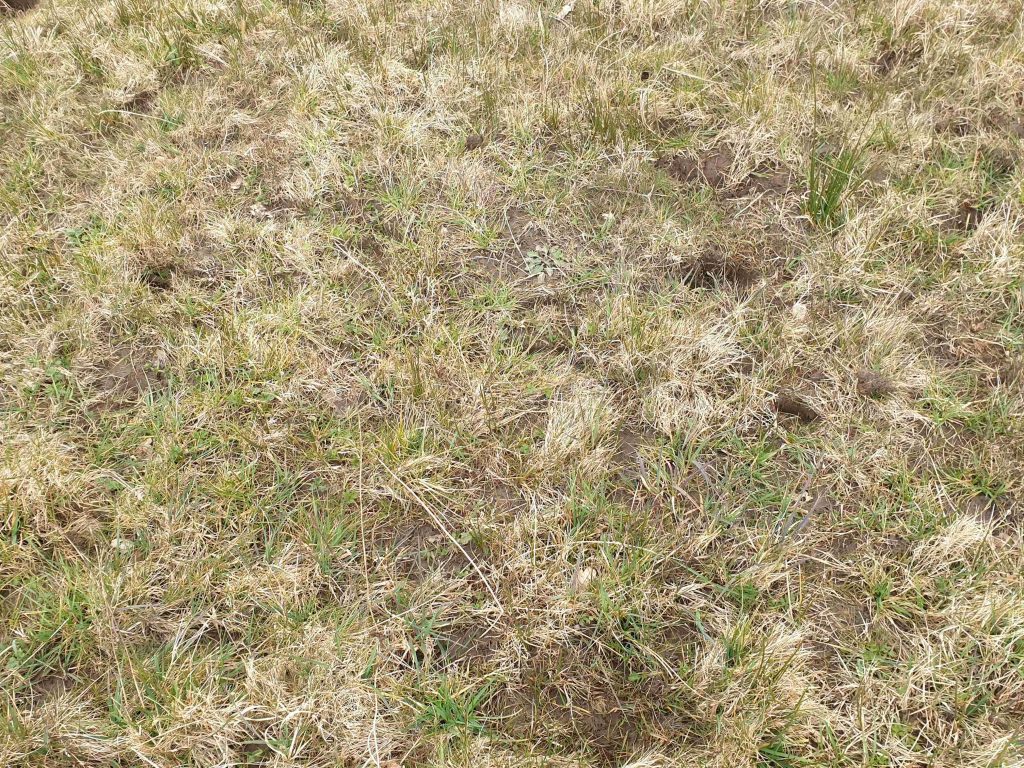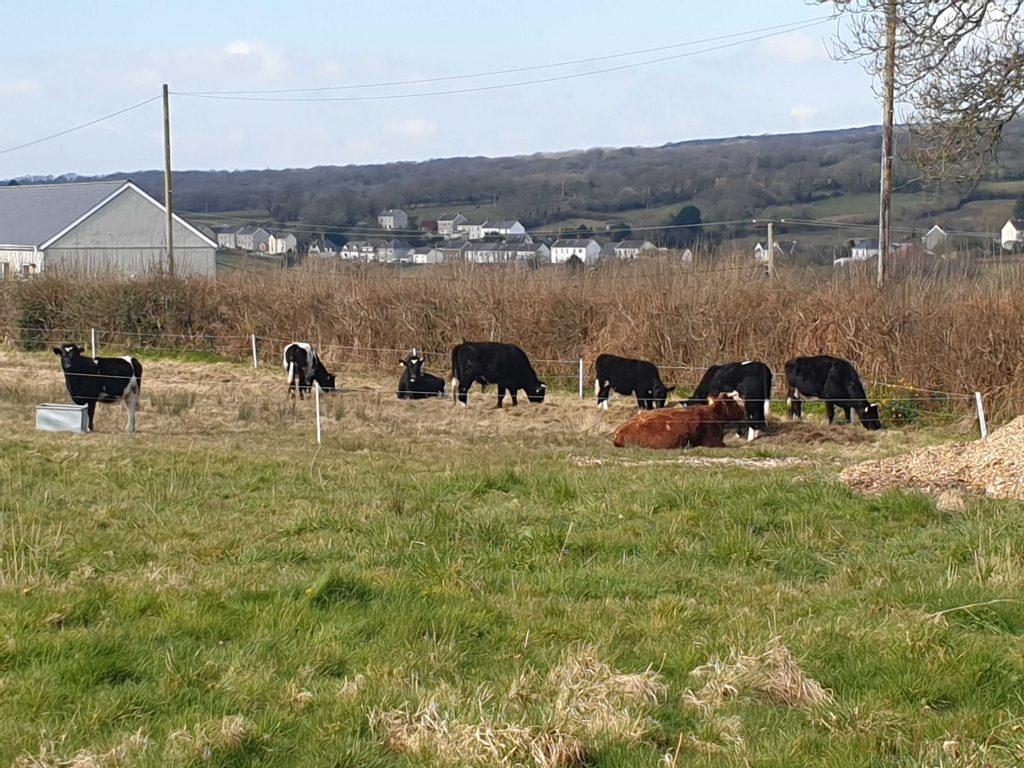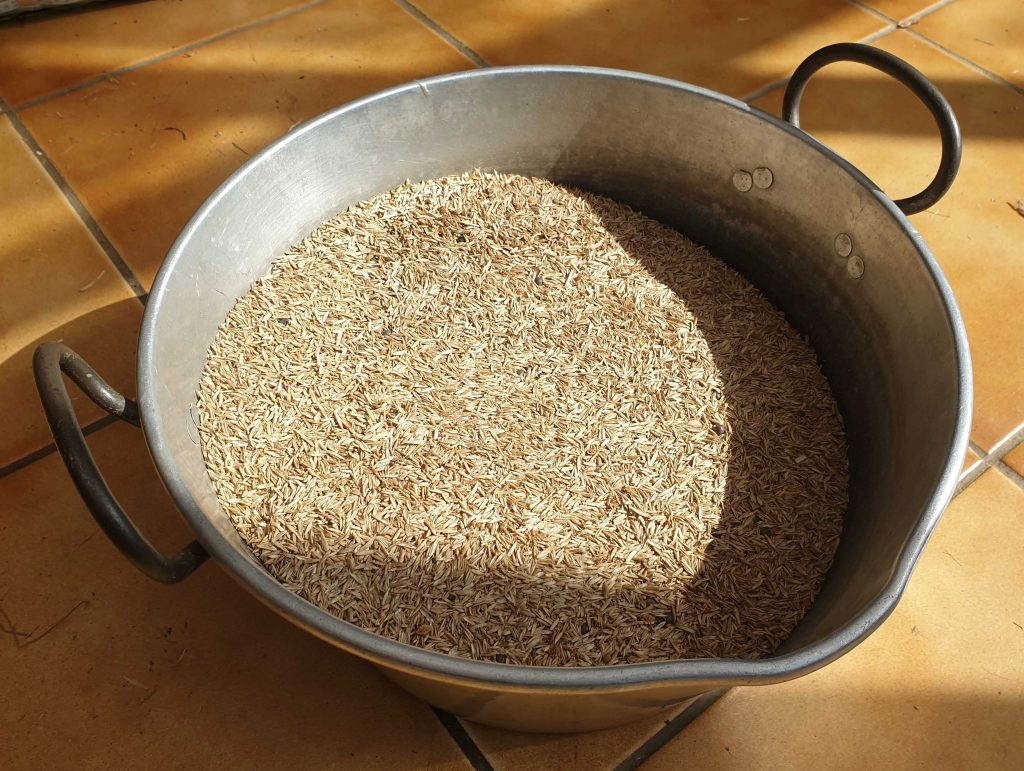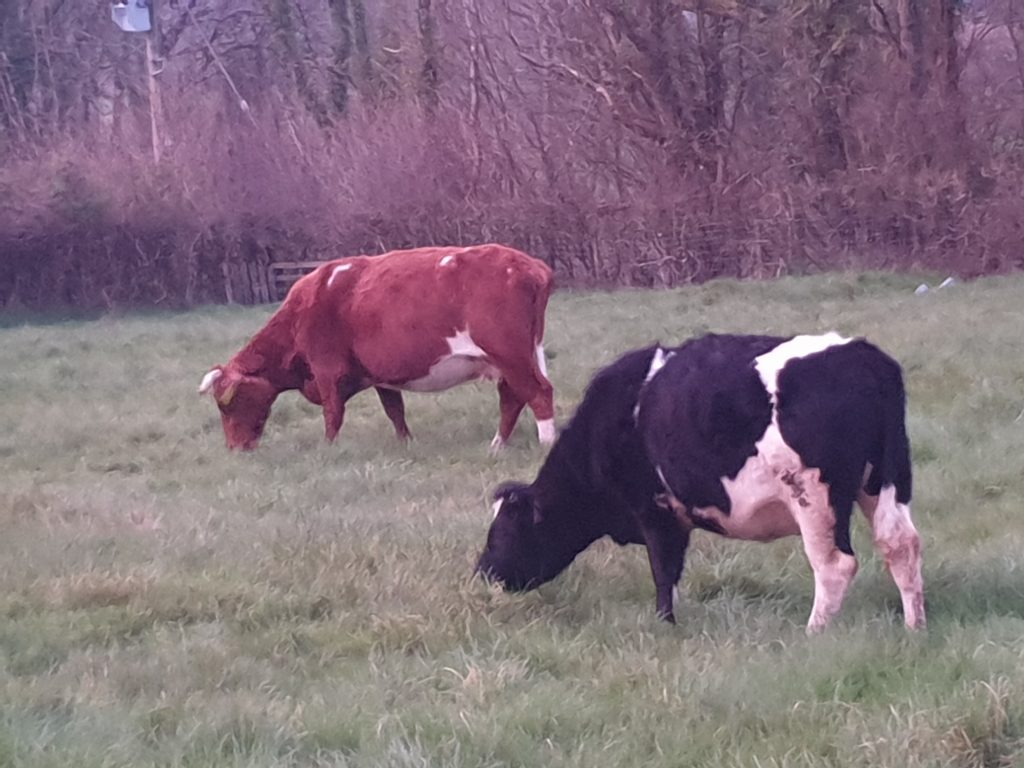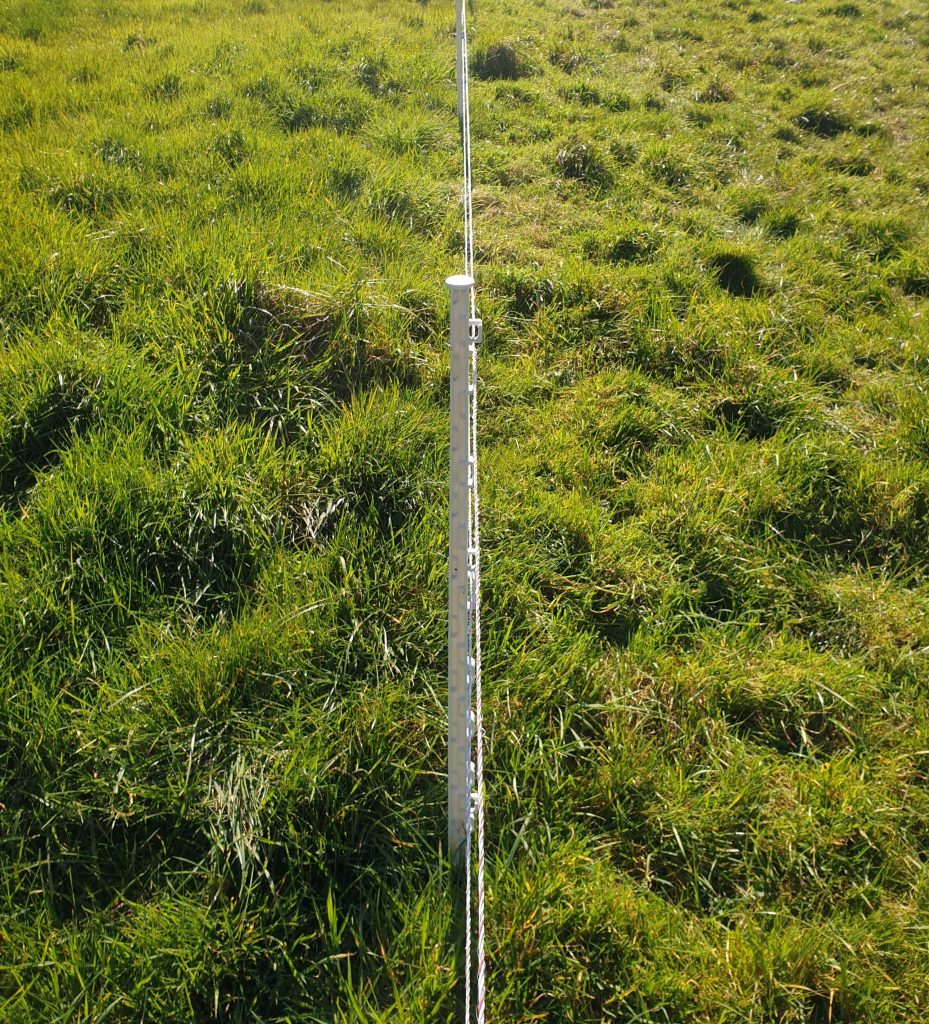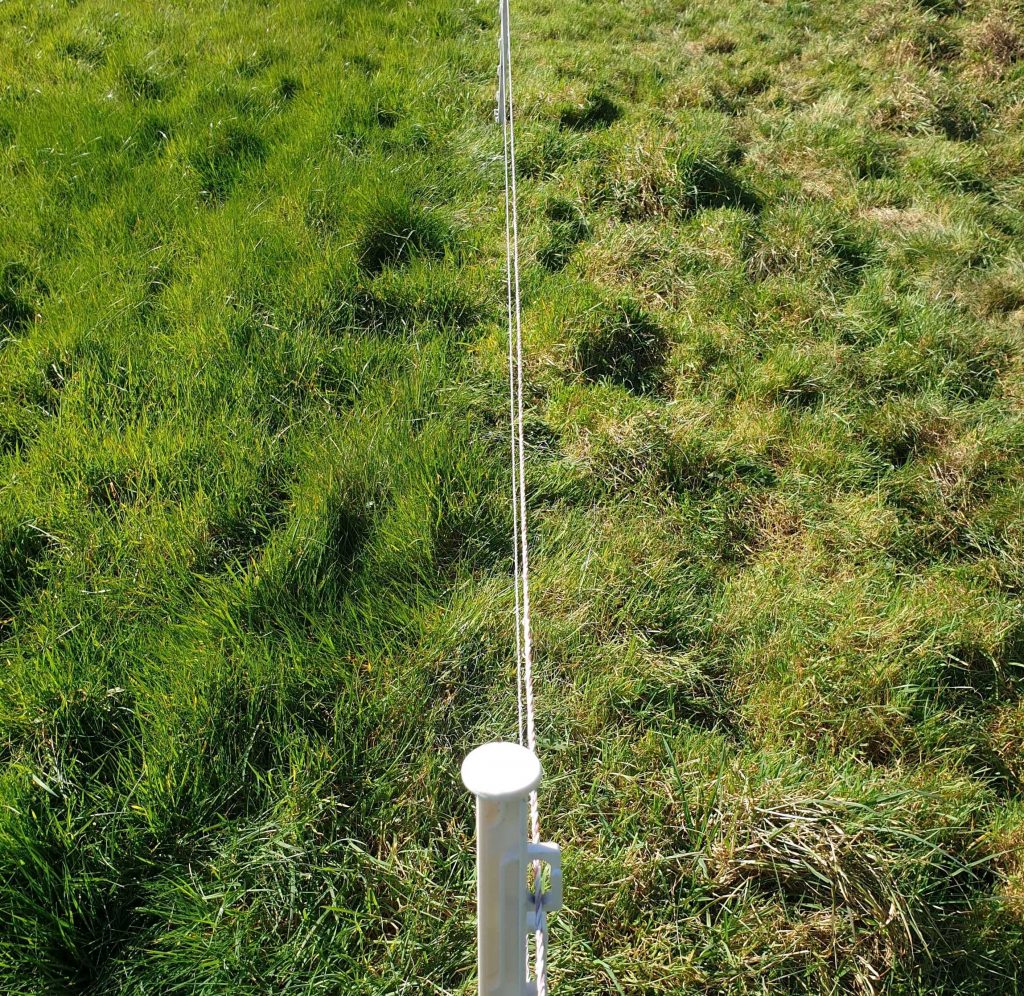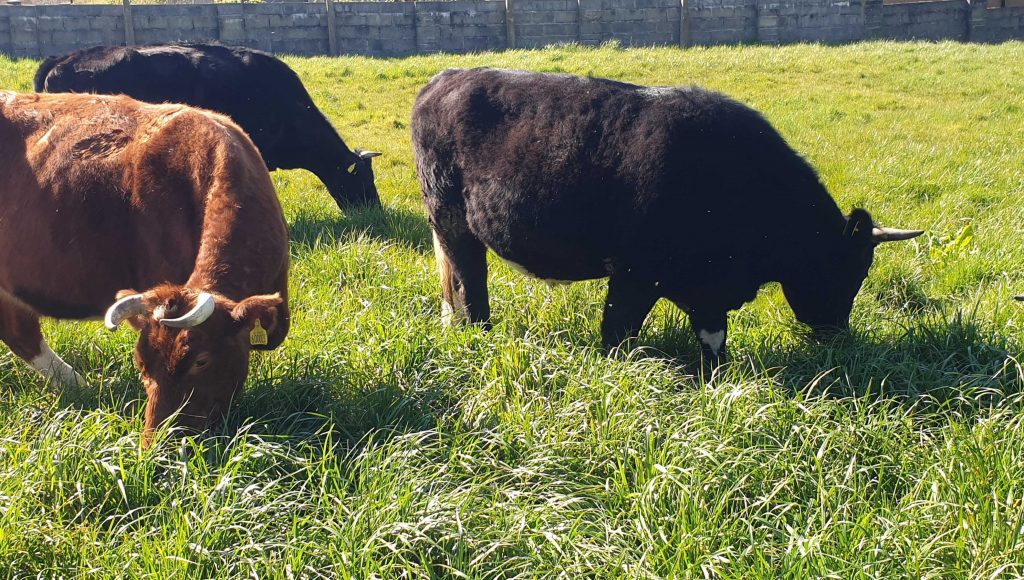It didn’t take the cows long to finish the pasture in the side field. Spring is here, but a lot of the grass is still short in most places, fine for our micro flock of sheep but not for cows. So this weekend seemed like the perfect time to try out bale grazing in one of our poorer fields.
Bale grazing basically means allowing animals in a field to eat directly from the bale of hay or haylage. Sometimes you can unroll the bale, or just dump it on the ground. The idea is that the animals will eat some of the bale and spread and trample the rest around where it will eventually rot down, improving the organic content of the soil. In the meantime the scattered haylage provides a nice mulch for the grass seeds that hopefully you remembered to sprinkle over your field beforehand!
The field we selected for the experiment was once part of a coal mine. The underlying geology of the coal outcrops means that areas of heavy clay sit next to shaley sections, you can see the evidence on the surface with the differences in vegetation.
We selected a relatively small area which we marked out with an electric fence. It is a low lying part of the field and the heavy clay means drainage is poor. What little grass is there is very short, stunted after months of the soil being effectively waterlogged.
We tried unrolling the first bale, but we weren’t able to spread it out as far as we would have hoped. Subsequent bales have just been unwrapped and left in the enclosure. The cattle seemed to enjoy the intact bales more, pushing and rubbing against them and flinging clumps of haylage about with their curved horns.
They have made quite an impact only in a short time, and we’ll see the improvement in later years.
